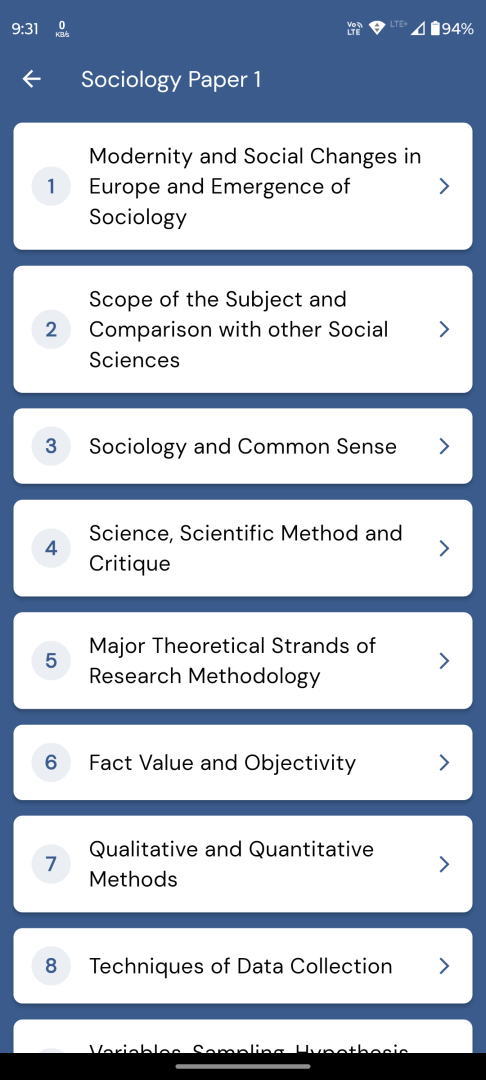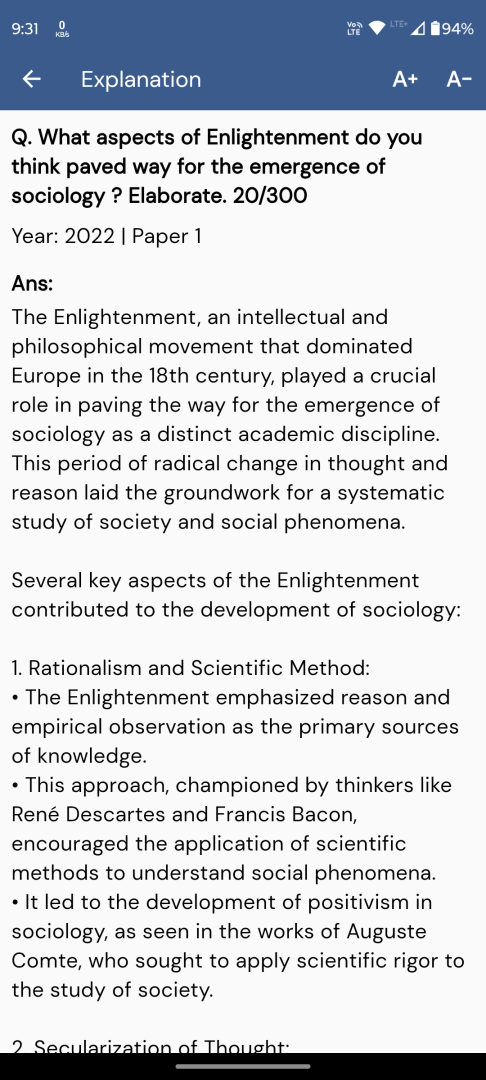Social Mobility within Caste and Class Systems in India
Social Mobility in Caste and Class Systems
Sorokin’s groundbreaking work on social mobility underscores a distinction between ‘closed’ and ‘open’ societies. ‘Closed’ societies, akin to a caste system, are characterized by their rigidity, offering scant avenues for mobility. Conversely, ‘open’ societies, often organized into classes, present plentiful opportunities for advancement through achievement. This differentiation emphasizes the impact of societal stratification on the possibilities for upward or downward social movement.
Caste: A Misunderstood System
Contrary to the common perception of the caste system as an immutable hierarchy, it is dynamic. Traditional setups largely determined one’s social standing by birth; however, complete immobility was not the norm. In reality, even within these ascriptive confines, certain routes to mobility existed.
Sources of Mobility in Caste Systems
The political fluidity of historical societies allowed new castes to emerge and wield power, with access to land serving as another vehicle for upward mobility. This enabled leaders of dominant castes to ascend to ruling positions, subsequently elevating the status of their entire group. The transformation of certain castes over time, as they took on royal titles and adopted the customs of the upper castes, stands as testimony to the mobility within the caste system.
Levels of Mobility: Individual to Group
Sociologists’ meticulous analysis identified three tiers at which mobility occurs: individual, family, and group levels.
Individual Mobility within a Family
At the most basic level, individual mobility within a family showcases how personal qualities and achievements can transcend collective identity. Personal attributes such as integrity and education can enhance an individual’s status, independent of caste. Conversely, personal failings might lead to a loss of prestige, denoting downward mobility.
Mobility among Families within a Caste
The second level of mobility pertains to a minority of families within a caste. Economic, educational, and political improvements enable these families to emulate higher-caste practices, leading to enhanced status. However, this mobility is more horizontal, bridging status distinctions without necessarily shifting caste positions.
Group Mobility
The third and most impactful level is the group mobility of a majority within a group. This collective shift in status, honor, and societal standing is often accompanied by changes in socio-cultural practices. By abandoning certain customs deemed impure and adopting more esteemed ones, entire castes have been able to rise in the social hierarchy, a process exemplified by Sanskritization.
The Process of Sanskritization
Sanskritization remains a central mechanism by which lower castes have historically improved their status. This cultural assimilation involves adopting rituals, practices, and behaviors of higher castes, thereby gaining social acceptance for their upward mobility. Through Sanskritization, castes have been able to make significant strides in redefining their social position within the traditional stratification system.
Sanskritization, Westernization, and Social Mobility in Indian Society
Sanskritization: Traditional Path to Social Mobility
Sanskritization is a process where a lower Hindu caste, tribal group, or other communities emulate the practices of the higher ‘twice born’ castes to improve their social status. This emulation encompasses customs, rituals, ideologies, and overall lifestyle changes, such as adopting vegetarianism and teetotalism. Seeking services of Brahmin priests, undertaking pilgrimages, and gaining knowledge of sacred texts are also part of this phenomenon. This process, however, does not alter the overall caste structure but creates positional changes within it.
The Mechanics of Social Mobility Through Sanskritization
The recording of caste status during census operations played a pivotal role in claims for higher status. These claims often escalated with each census, where a caste that identified as Vaishya might claim to be Brahmin or Kshatriya in subsequent records. Alongside these claims, castes would emulate the lifestyle of higher-ranked warrior rulers (Kshatriyas) or Brahmins, seeking to legitimize their newfound status through visible attributes associated with these higher castes.
Patterns and Reactions Within Sanskritization
The phenomenon also displayed patterns of increasing Puritanism among castes rejecting the superiority of the twice-born, such as the Koris of eastern Uttar Pradesh who would refuse water from Brahmins. On the flip side, re-sanskritization occurred when westernized or modernized groups discarded symbols of modernization, reverting to traditional sanskritic lifestyles. This process of de- and re-sanskritization contributed to the formation of new groups and political mobilization.
Westernization: The Multidimensional Catalyst for Change
Westernization, as per Srinivas, encompasses the changes in Indian society due to over 150 years of British colonial rule. This process impacted technology, institutions, ideologies, and values, altering pre-existing social setups and opening new avenues for mobility. The introduction of new means of transport and communication under the British significantly diluted the rigid caste restrictions.
Land as a Commodity and New Institutions
The commodification of land had far-reaching effects on social mobility. Members of lower castes who could afford to purchase land could elevate their social standing, while those who lost land experienced downward mobility. Moreover, the establishment of new institutions like the army, bureaucracy, and law courts, which recruited based on merit rather than caste, also provided new opportunities for social mobility.
Education, Economic Opportunities, and Reforms
The British rule’s impact on education was significant, with schools and colleges opening up to all castes. Economic opportunities, such as those in railway, road, and canal construction, also benefited lower castes. Westernization thus served as both a desirable mechanism for mobility and a model for emulation.
Post-Independence Continuation of Westernization
Post-independence India embraced the rationalistic, egalitarian, and humanitarian principles introduced by the British, creating additional scope for social mobility. New legal systems based on equality before the law and land reforms empowered lower castes, while the adoption of universal adult franchise and Panchayati Raj System altered power dynamics to favor weaker sections.
Impact of Reforms on Social Mobility
Reform efforts within society, such as the emergence of egalitarian sects like Buddhism, Jainism, and Sikhism, generated opportunities for mobility by challenging caste-based inequities. Christian missionaries’ proselytization efforts provided education and health facilities to oppressed castes, further enabling social mobility. Indian reformers like Raja Ram Mohan Roy and Swami Vivekananda abolished regressive practices, promoting rationality and equality. New religious sects born out of these reform movements played a vital role in elevating the status of their adherents through education and modern knowledge.
The Role of Gandhi and Ambedkar
Mahatma Gandhi and B.R. Ambedkar’s crusades for the rights of untouchables culminated in the abolition of untouchability and the introduction of protective discrimination, facilitating large-scale upward social mobility among historically marginalized groups.
The Dynamics of Secularization and Social Mobility in India
Secularization refers to the transformation wherein elements of society that were once dominated by religious ideologies and norms start to become less influenced by such spiritual doctrines. This shift also denotes a distinctive separation between various facets of societal structure, including the economy, politics, law, and ethics. In a historical context, purity and pollution were central to determining an individual’s social standing, occupation, and lifestyle. However, as rationality and education gain prominence, the influence of these traditional notions diminishes, allowing for more inclusive social interactions.
The Role of Education in Social Change
Traditionally, access to education was a privilege reserved for the Brahmins and the ‘twice born’ castes. This scenario began to change under British colonial rule when educational institutions opened their doors to all classes, laying the foundation for knowledge that was secular and rational. The democratization of education paved the way for personal and collective social mobility, enabling individuals from diverse backgrounds to secure positions in the military and bureaucracy, and promoting principles of justice, liberty, and equality. Post-independence, India’s efforts to empower Scheduled Castes (SC), Scheduled Tribes (ST), and Other Backward Classes (OBC) through educational reservations created a new middle class, though the benefits were initially limited to a minority, leading to divisions based on access to education.
Impact on SCs and OBCs
Social mobility can occur through conflict or through policies of protective discrimination. British colonialism provided a backdrop for the oppressed castes to improve their status, often by adopting the customs of higher castes in a process known as Sanskritization. Despite these efforts, the upper castes capitalized on new opportunities, increasing the social and economic divide. To combat this, underprivileged castes sought to claim economic and political resources, exemplified by Caste Sabhas and anti-Brahmin movements from the 1870s led by dominant castes like Kammas, Reddis, and Nayars. Dr. B.R. Ambedkar’s leadership among the Mahars and movements like the ‘Dalit Panthers’ highlight the drive for horizontal (across similar socio-economic levels) and vertical (upward) mobility.
Courses of Mobility
Sociologist Pradeep Bose has identified two principal routes to social mobility. The first is through efforts to elevate the status of a caste via census participation and petitions to authorities. This often involved Sanskritization and distinguishing themselves from castes of similar rank, such as the Kayasthas and Bhumihar in Bihar. The second route arises from economic distress, where castes like Yadavs, Kurmis, and Keories have formed associations to transform their political and economic circumstances.
The Effects of Protective Discrimination
Protective discrimination, a policy initiative aimed at fostering upward mobility for backward sections of society, includes reservations in educational institutions and governmental bodies, along with scholarships and job quotas. While these measures were intended to level the playing field, the benefits have been somewhat concentrated, with recipients within these communities achieving significantly higher status than their peers. This has led to further intra-caste divisions.
Social Mobility in Agrarian Classes:
In traditional India, landownership was a symbol of prestige and could not be easily bought or sold. However, the British colonial rule introduced significant changes by making land a saleable commodity. This transformation had far-reaching consequences on agrarian relations and social mobility.
Land Reforms and Vertical Mobility:
The introduction of land reforms in the 1950s aimed at abolishing intermediaries like the Zamindars and providing land to the tillers. This initiative generated both upward and downward social mobility. Some tenants were able to purchase surplus land, leading to upward mobility. In contrast, others were displaced by Zamindars who claimed to be cultivators, resulting in the pauperization of landless laborers.
Impact on Zamindars:
Land reforms also led to downward mobility for the Zamindars, as they lost the right to extract taxes and shares from cultivators. This loss of income left them with fragmented holdings that could not sustain their feudal lifestyles. Additionally, legal measures like the introduction of panchayats and universal adult franchise diminished their influence and power.
Green Revolution and Social Inequality:
The Green Revolution, initiated by the government in the 1960s, brought further changes to agrarian classes. This program aimed to increase agricultural productivity through the use of High Yielding Variety seeds and fertilizers. However, these advancements required additional infrastructure like tube wells, which small peasants couldn’t afford. This resulted in the emergence of a new class of ‘Progressive Farmers’ with large land holdings and the capacity to invest in resources like tractors and power threshers. These progressive farmers operated as entrepreneurs, further reinforcing social inequality.
Political Mobilization of Agrarian Classes:
The prosperity of rich landlords at the expense of landless workers created conflict in the agrarian setup. Political mobilization among agrarian classes began during the freedom struggle and continues today, albeit with variations across regions, classes, and time periods.
Social Mobility in Urban Classes:
Urbanization is not a recent phenomenon in India, as there were cities with distinct patterns of ranking and administration even before British rule. However, industrialization and urban migration have significantly altered the social class structure in urban areas.
Capitalists/Bourgeoisie:
British colonialism introduced modern industrialization to India, leading to the growth of the capitalist class. Industries, free trade, and new markets provided opportunities for traders to become wealthy and venture into industry. Notably, many industrialists today originate from trading castes and communities.
Entrepreneurs, Traders, and Shopkeepers:
Urban society has always included entrepreneurs, including traders and shopkeepers. With the expansion of cities and towns, these classes flourished by capitalizing on the rising demand for goods and services. Entrepreneurs in various fields, such as restaurants, marriage bureaus, and property dealers, have become wealthy. Some have diversified and expanded in their traditional occupations, while others have established entirely new enterprises.
Professional Classes:
The British colonial era saw the establishment of educational institutions to train professionals, including doctors, lawyers, managers, bureaucrats, scientists, and technocrats. This professional class has expanded significantly in both size and prestige, encompassing a diverse range of occupations. Education and qualifications play a crucial role in their status, and a substantial proportion of them are salaried employees in the public or private sector.
Working Class:
The working class in India has evolved over time. Initially, it consisted of pauperized agricultural laborers who were landless or impoverished peasants. Many joined the workforce as “target workers” or seasonal laborers. With the recent expansion of industry, the working class has grown and diversified across the country. These workers have organized into unions to negotiate better terms with their employers. These trade unions often have political affiliations and have elevated their leaders to positions of influence.




